
Seasonal keywords offer a unique opportunity to tap into moments when consumer intent is at its highest.
By targeting event-driven keywords, you ensure your content matches the user intent during the current trends. You can tremendously boost your sales by preparing your content marketing and SEO strategy based on these changing customer preferences.
In this blog post, we're going to look at seasonal keywords, how you can find them, and whether they are worth targeting in your SEO strategy.
What are Seasonal Keywords?
Seasonal keywords are a type of keyword in SEO that spike in popularity during specific times of the year.
For instance, keywords related to "Christmas gifts" see a surge in searches as the holiday season approaches, while "mother's day gifts" becomes popular a few months before May.
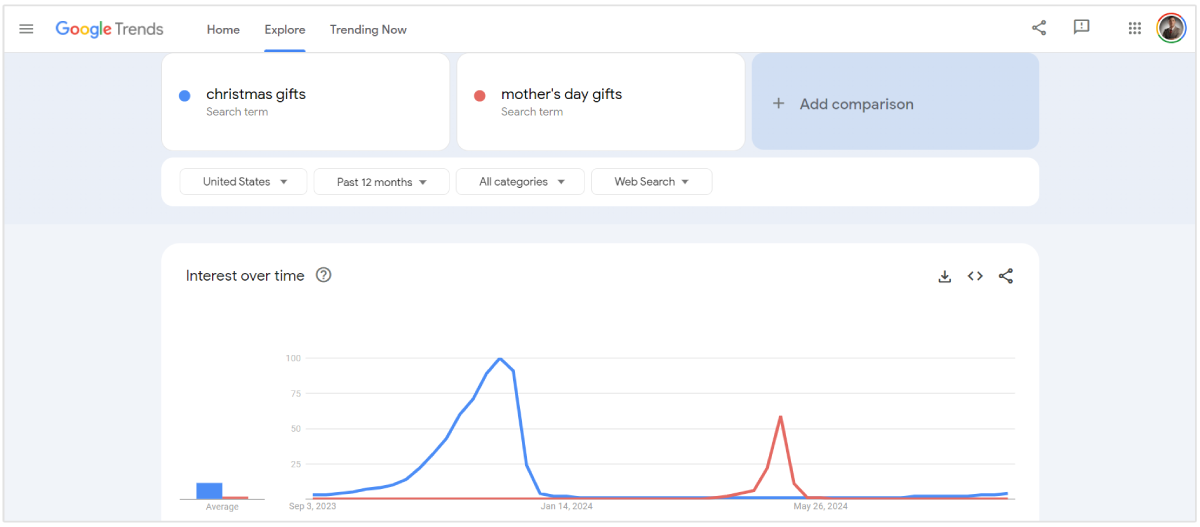
Businesses should consider keyword seasonality to capture the increased interest in their products or services during these periods.
Examples of Seasonal Keyword Trends
Seasonal keywords don’t just reflect what people are searching for. Instead, they reveal key interests and necessities that arise at various times throughout the year.
From the critical deadlines of tax season to the festive buzz of holiday shopping and the thrill of summer travel planning, each season brings its own keyword opportunities.
Recognizing these trends helps businesses forecast needs, adjust their marketing messaging, and connect with target buyers strategically.
Here are some examples of seasonal keyword trends throughout the year:
| Season | Keywords |
|---|---|
| Winter | Holiday gifts, winter clothing, New Year’s resolutions, ice hockey tickets, ski resorts, hot chocolate recipes, Christmas decorations, Valentine’s Day gifts |
| Spring | Spring cleaning, Easter recipes, garden planting, Major League Baseball, allergy relief, Mother’s Day gifts |
| Summer | Summer vacations, beachwear, barbecue recipes, Wimbledon schedule, summer travel deals, air conditioning service, Father’s day gifts |
| Fall | Halloween costumes, Thanksgiving recipes, autumn home decor, NFL football games |
How to Find Seasonal Keywords?
Here are the top ways to identify seasonal keywords:
Use Google Trends
Google Trends lets you see the popularity of search terms over time. You can input a keyword and view how its search volume changes throughout the year.
You can also adjust location, time range, and categories to get more accurate data.
For instance, I checked the popularity of "Black Friday Deals," it clearly shows a good spike in November.
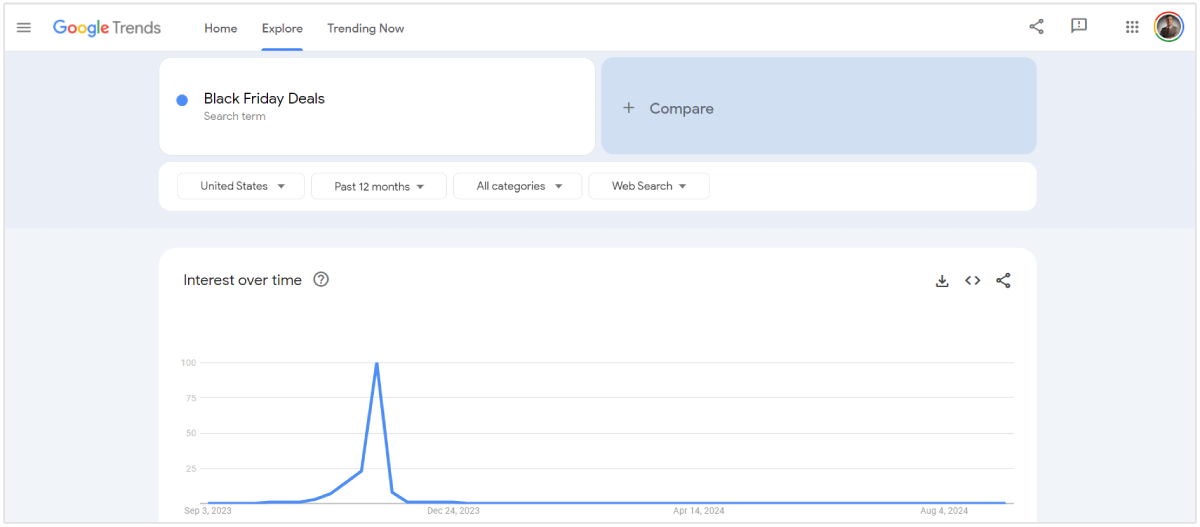
You can use seasonal keyphrases and event or holiday-driven keywords to prepare a list of relevant occasional keywords based on your business niche.
Take the Help of Keyword Research Tools
You can also use the top SEO keyword research tools to generate a list of seasonal search terms.
For example, the SEOptimer keyword research tool lets you find seasonal keywords based on your niche. You can find keywords from a massive database of 3 billion keywords in over 90 countries. The tool offers insights into search volume, competition, estimated traffic, and CPC.
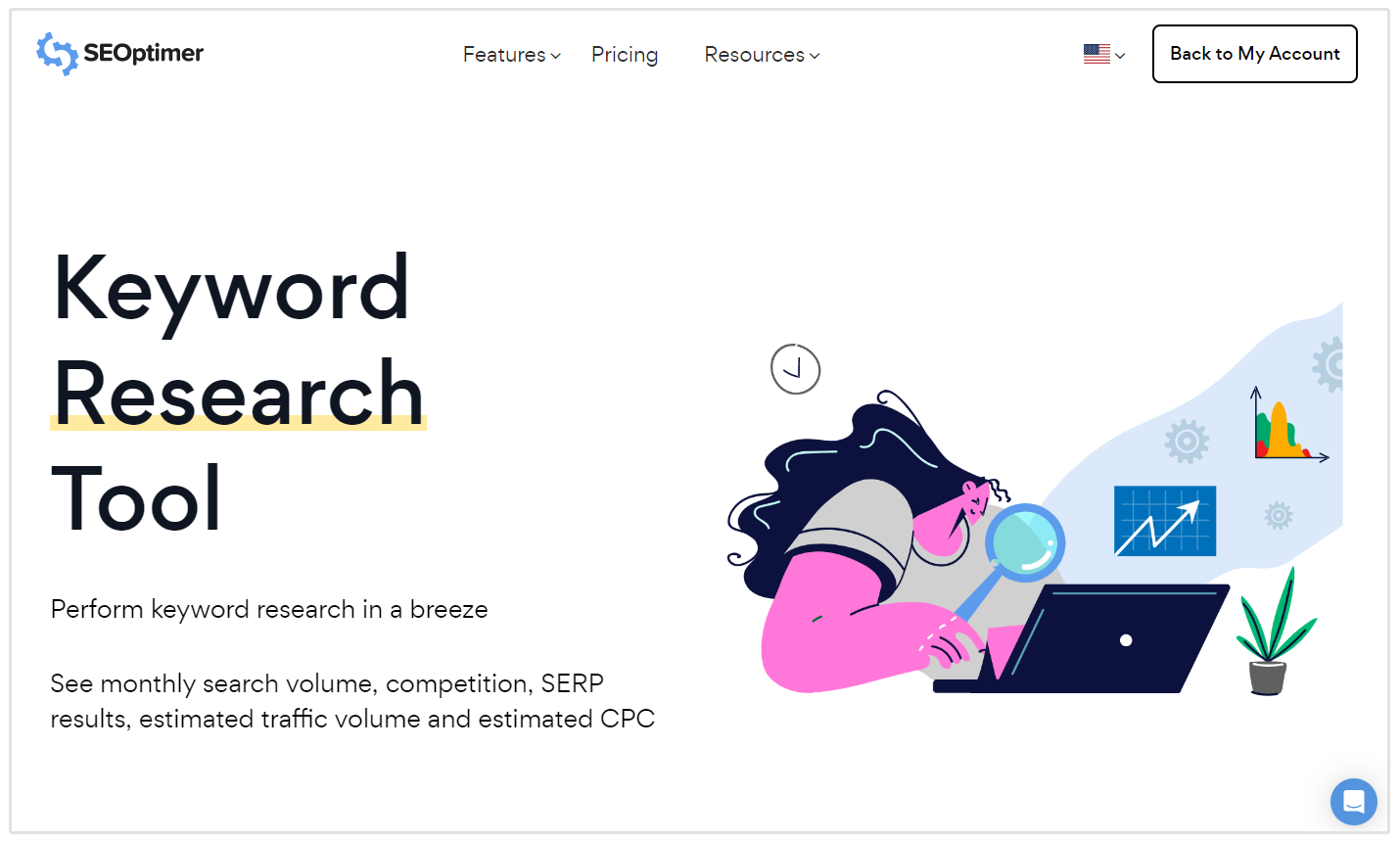
You can use the tool to research keywords and URLs, access international keyword opportunities, and track historical data to optimize your content for seasonal peaks.
Reverse Engineer Your Competitor Keywords
Finding the search terms your competitors are targeting is always useful when planning your seasonal keywords SEO strategy.
You can also reverse engineer your competitor’s keywords using SEOptimer.
Enter your competitor’s URL in your tool. Analyze the keywords associated with their top-ranking pages and note their search volume and difficulty.
For instance, let's imagine that we own an online clothing store selling Fourth of July merchandise, including clothing, and our main competitor is a site with the URL, 4thofjulyshirts.com.
By adding the URL to SEOptimer's keyword research, we can find all of the keywords that this site is ranking for and using on their website.
You can also study the SERP results to see how these keywords perform and what content ranks well. Just click on the blue "SERP" button to open the SERP for the keyword you want to analyze.
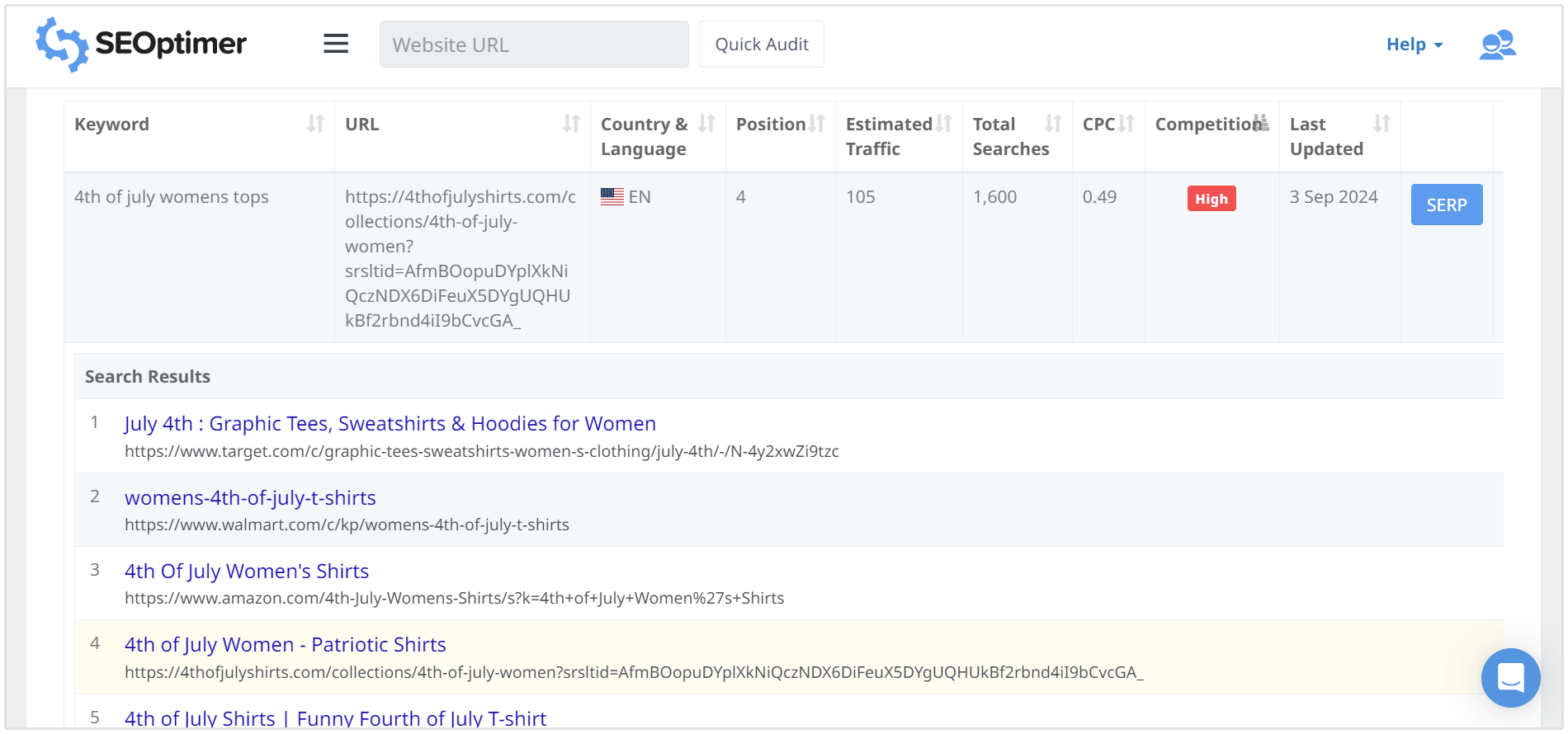
Use this information to identify gaps and opportunities to boost your SEO strategy and outrank your competitors.
Are Seasonal Keywords Worth It?
The demand for products and services fluctuates with the changing seasons.
When you know the specific times of the year when your product or service demand will surge in popularity, you can optimize your website beforehand. With proactive optimization, you can open new revenue streams and boost your sales.
Here are the top benefits of optimizing your site for seasonal keywords:
Increased Visibility
Seasonal keywords help your content appear in search results during peak times when users are actively searching for related products or information.
Imagine you are an online gift shop owner. With the help of Google Trends, you can quickly discover a surge in popularity for the keyword "Valentine's Day gifts" in January, which reaches its peak in Feb.
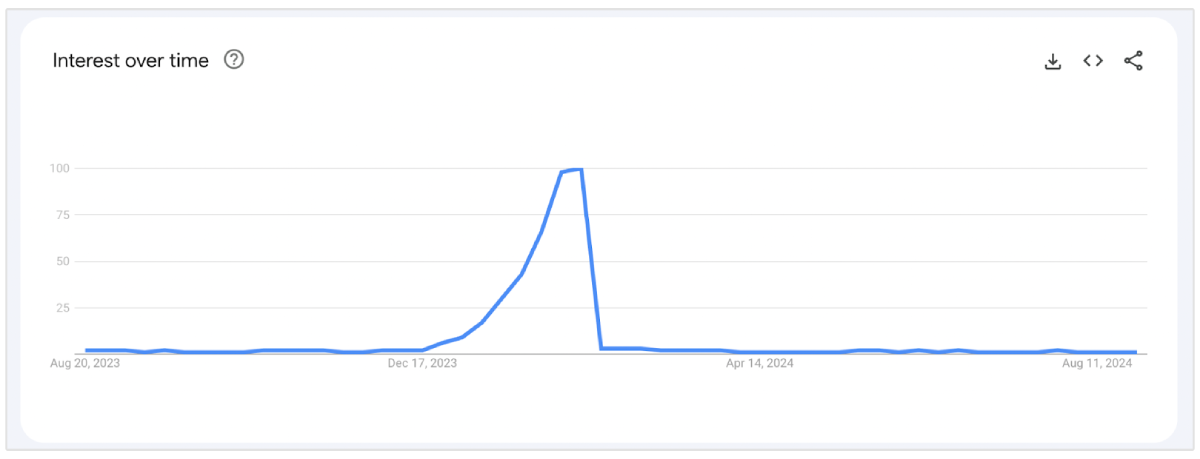
You can prepare Valentine's gift content for shoppers looking for romantic presents during January and February and drive more sales. Similarly, you can find other festival-trending keywords for the remaining months and plan your content calendar accordingly.
Higher Engagement
Content relevance is a key factor in boosting visitor engagement. 80% of consumers buy more from brands that personalize and match their search intent.
You should match contemporary trends and seasonal occasions to engage users more effectively.
For example, publishing articles or promotions related to summer vacations during the summer months can capture the attention of users who are planning their trips. This ultimately leads to higher engagement and interaction with your content.
Timely Relevance
By targeting seasonal keywords, you can address interests tied to events like the World Cup.
For example, during the World Cup season, a sports website could use keywords such as “World Cup jerseys,” “soccer match schedules,” or “top World Cup fan gear.” This strategy attracts users eager to follow the tournament and show their support.
An example of a website that does this well is Soccer Post, an online store selling soccer gear and merchandise.
They create blog posts about game highlights, tournament results and other relevant content about soccor.
For instance, in the screenshot below you can see a blog post about the final four teams that progressed to the semi-finals of the Copa America tournament.
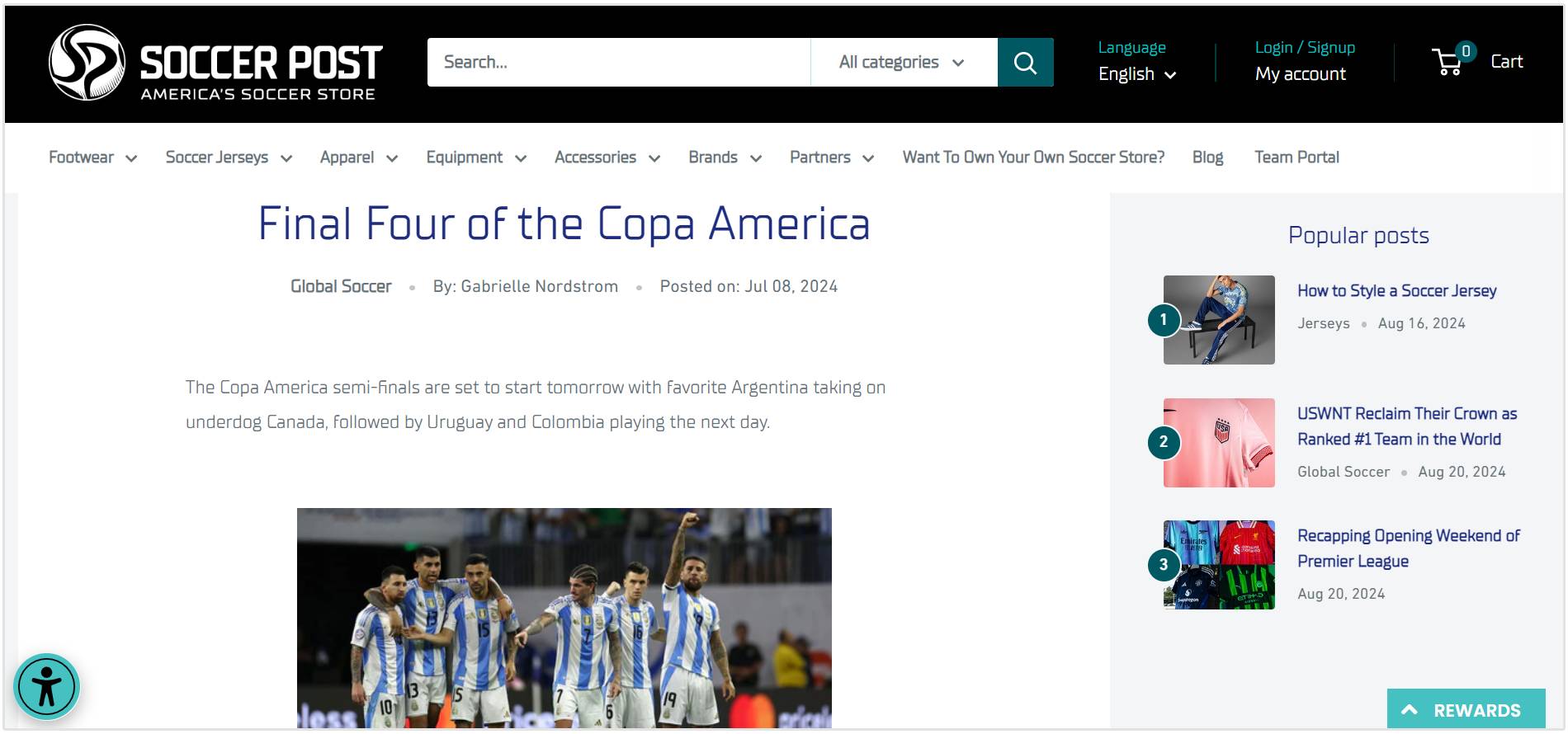
This relevance ensures that your content remains timely and engaging, boosting the chances that fans will find and interact with your articles, product pages, or promotional offers related to the event.
Enhanced Conversion Potential
When your content or offers are timed to match users’ immediate needs, such as promotions of wedding dresses during the wedding season, it increases the chances of conversions.
Brides-to-be are more likely to respond to timely offers and relevant products, leading to increased sales or sign-ups during this high-demand period.
Competitive Advantage
Incorporating seasonal keywords into your strategy allows you to outperform competitors who may not be focusing on these opportunities.
By adapting your content with seasonal trends, you can capture a larger share of search traffic.
Moreover, you can effectively meet consumer demand by positioning your brand as a go-to resource during high-traffic periods.
How to Use Seasonal Keywords in Your SEO Strategy?
Targeting seasonal keywords in your SEO strategy is an excellent way to acquire quality traffic and grow sales. Here are three ways to optimize your site for seasonal SEO:
Plan Your Content Calendar in Advance
Find the products and services your target audiences search for during specific seasons. Schedule content creation around these seasonal trends in advance.
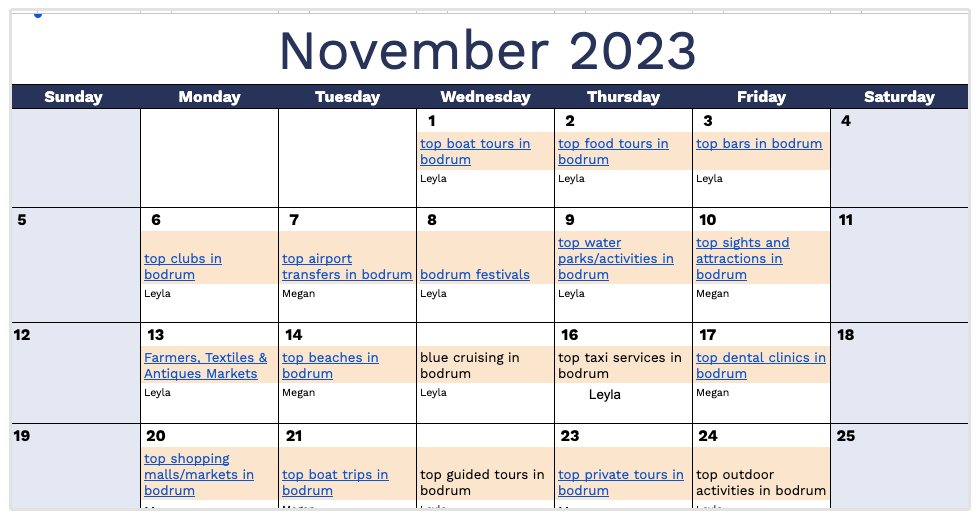
Use keyword research tools to find the top seasonal keywords for your niche. Have a mix of long-form topical articles and timely content.
Another powerful tactic is to include popular hashtags for social media sharing during these peak times.
Continue updating the content each year with that year's trends and stats to keep your articles fresh. You can also partner with influencers to boost your content strategy.
Optimize Your Images for Each Season and Events
You should optimize your website images for each season. This helps reflect the current time of year.
For example, if you have an online school stationery store, you can plan the sale of your products in specific months.
When your customers prepare for the new school year in July and August, you can focus on essentials like backpacks and notebooks.

In the fall, feature images of your organizational tools, such as planners and binders, and classroom settings.
On Teacher's Day, showcase your teacher gift sets.

In spring, display exam prep materials and graduation accessories, such as caps and gowns.
Customizing your images to each season and event keeps your content relevant and engaging.
Prepare for Next Year
After the season ends, find out what worked and what needs improvement.
For example, analyze the effectiveness of showcasing colorful backpacks and notebooks in summer or promotional ads for exam prep materials in spring.
Assess customer engagement with various types of content, such as blog posts, social media updates, and product videos.
You can check this type of engagement in your site's Google Analytics dashboard. Simply head to the Engagement tab on the left and set the measurement period to match period you'd like to measure.
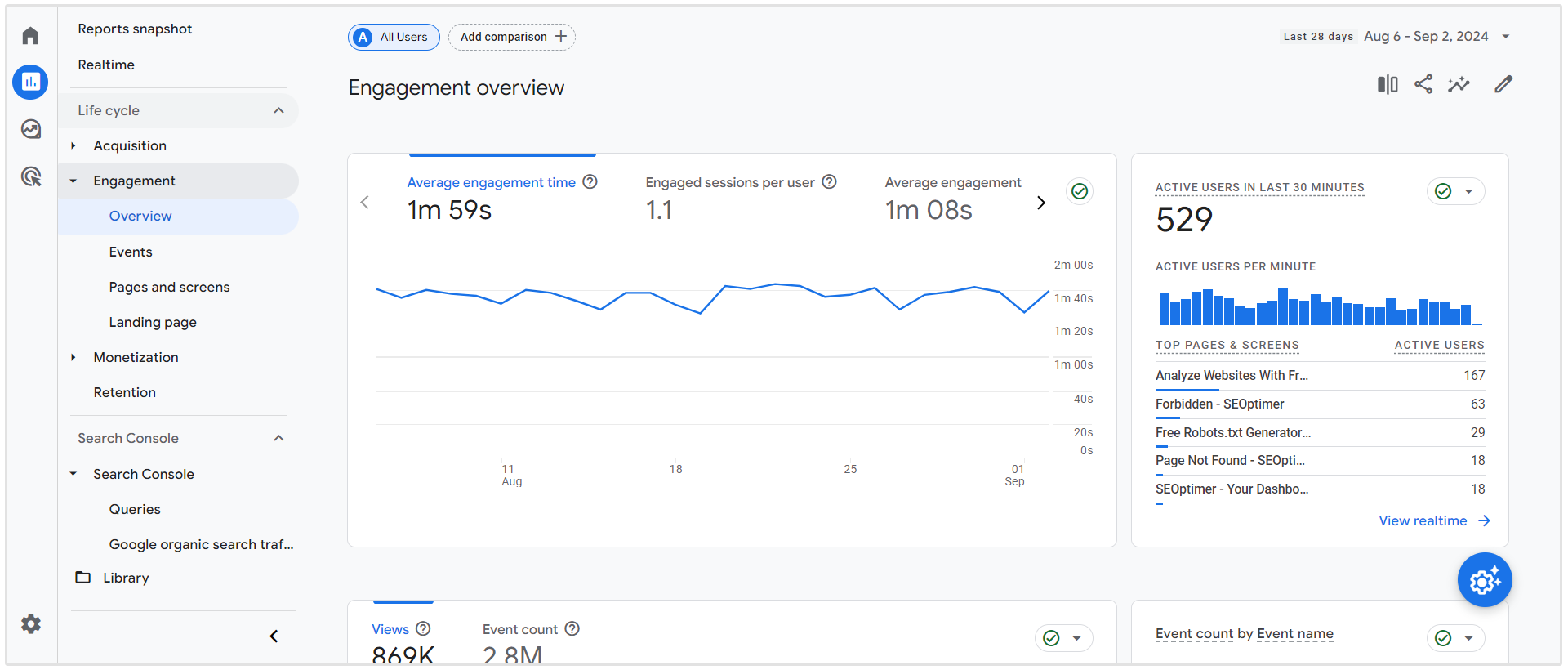
For social media posts, you're going to have to use the platform's insights dashboard or you can consider using a tool like SocialStatus to view social media anlytics across all your social channels.
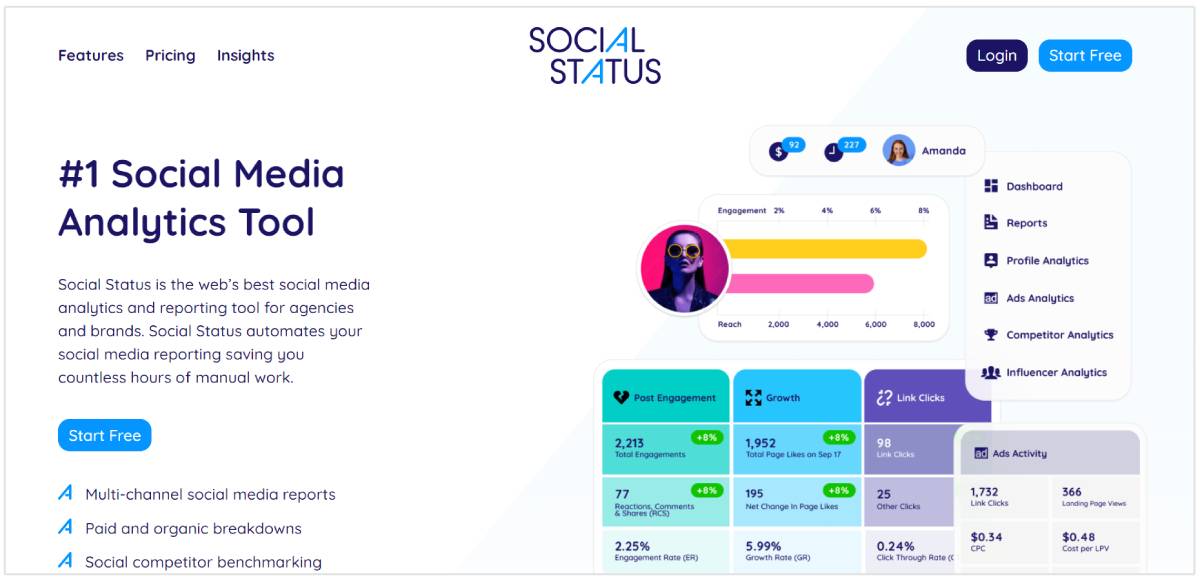
Look at metrics like sales figures, website traffic, and customer feedback to understand what resonated with your audience and what areas might need some improvement for next year.
And look for any gaps or opportunities for better synchronization with buyer preferences.
Detailed analysis will help you adjust your strategies, refine your content, and plan more effectively for the upcoming season.
Conclusion
Seasonal terms are a powerful method to coordinate your content plan with your audience’s shifting preferences over the year.
While they require strategic planning and timely updates, the ability to capture heightened interest during specific periods can lead to significant traffic boosts and better engagement.
Integrating these keywords into your SEO efforts can help you stay relevant and competitive, ensuring that your content connects with your customers when it matters most.










